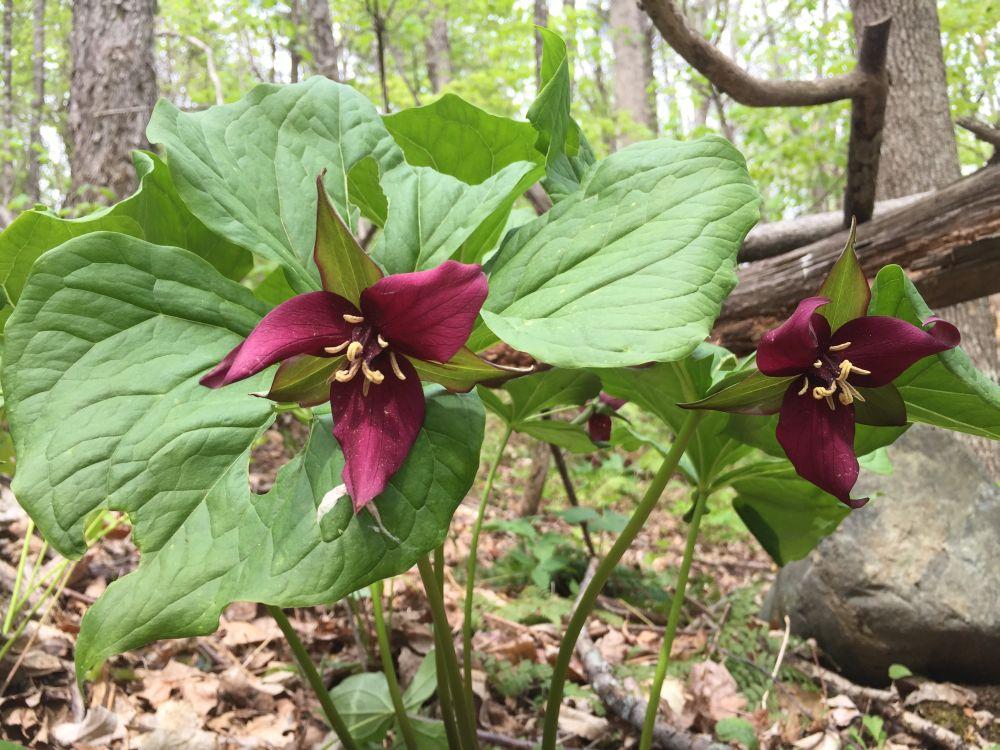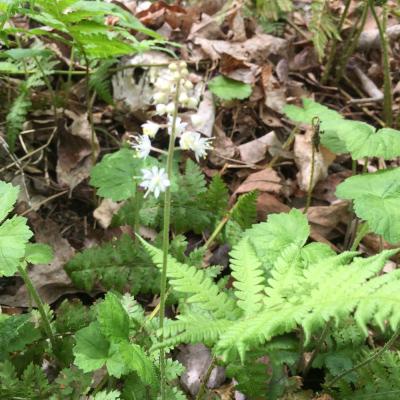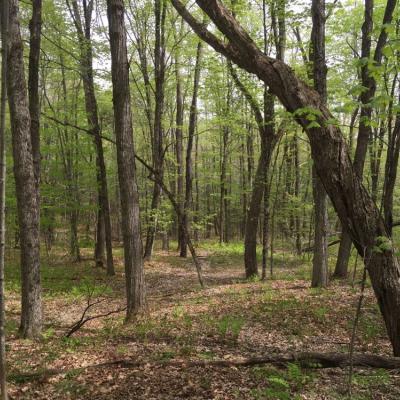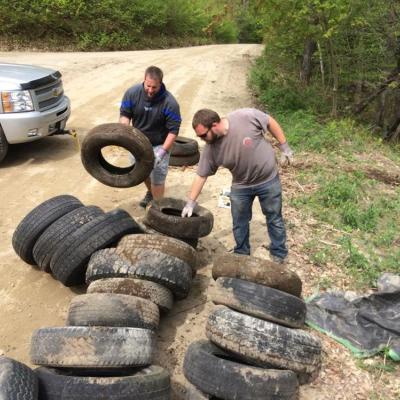Forest Journal
- Tags:
- Volunteers

Wildflowers of the enriched forest at Grafton Pond include red trillium. Forest Society photo.
Leaving Only Wildflowers in our Wake
A recent effort to remove a roadside dump from a Forest Society Forest Reservation at Grafton Pond also yielded a chance to photograph a few wildflowers that are ecological “indicator species.” Specialized moist and nutrient-enriched forest sites are typically found down-slope from steep cliffs, talus boulder slopes or narrow ravines.

Pockets of woodlands that receive continuous water seeping from steeper terrain above tend to have a relatively higher than average pH for New Hampshire, less acidic and closer to neutral. Gravity collaborates by depositing thicker layers of fallen leaves at the bottom of slopes. Here, the accumulation of soil nutrients yields a richer diversity of spring wildflowers.
The wildflowers include red trillium, Jack-in-the-pulpit, foamflower, rosy twisted stalk, Solomon’s seal and trout lilly with its mottled red and green leaves. Another good enriched site indicator plant is white baneberry, also called “doll’s eye” for its striking white berries with black pupils borne on crimson red stalks by mid-summer.

Think of these humus-enriched, moist forests as the best-mulched place in your vegetable garden. It is where you grow heavy-feeding tomatoes or pumpkins. The tree equivalents are sugar maple, white ash, black cherry and basswood. These trees are adapted to sweet, high pH, enriched moist soil. By contrast, dry, acidic sand, clay or glacial till soil is more common to New Hampshire. It's where pine and hemlock or beech and birch tend to grow. Likewise, carrots and corn are able to grow from drier soils that are not particularly rich in nutrients.

Overlooking the wildflowers in the enriched forest near Grafton Pond, a steep roadside bank lay strewn with old tires and a full pickup truck load of debris. The trash heap included a demolished television set, broken glass, plastic lawn furniture, bird cage, snowmobile seat, rotting lumber, the remains of an upholstered recliner chair and inexplicably, a near-complete skeleton of a wild boar partially scattered by local coyotes.
I use past tense because four big, strong, burley men – volunteers from Hypertherm Corporation in Lebanon - joined me and two colleagues to dig out and haul the tires and trash up from the ravine and load the Forest Society pickup truck for a trip to the transfer station.

The stewardship effort to remove an illicit dump isn’t glamorous, particularly during blackfly season. Yet it certainly was gratifying to remove the local eyesore.
The forest at Grafton Pond is now doubly-enriched. Formerly degraded woodlands are once more scenic, enhanced by the efforts of hard-working volunteers who removed the trash and left only special wildflowers nodding in their wake.

